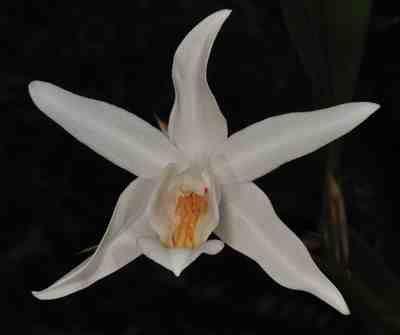A look alike of the species plant. However, not found as common as it. The only notable difference is in the size of the pseudo-bulb and in the colour of the flowers. The bulbs of this variety are comparatively smaller than that of the species ones, and also the flowers are generally white to pale greenish white. Sepals are pale greenish white and petals pure white, rest of the flowers is as the species itself with the unpleasant odour also.

The Pursuit
Never ever heard of the white coloured Coelogyne elata Lindl (Coelogyne stricta (D Don) Schltr.So after documented the species, I had marked on the page of my reference book as “done” (a usual practice after finishing work on each species). However, while on a search to the same area, where I found the species, we found a few plants of this variety in buds which are unusually pale in colour. The unusual colouration of the buds caught my attention and I decided to have a comparative study of those buds with the species buds which produced the ochraceous flowers. To my bad luck I was not able to find any ochraceous ones in buds. So I was totally depended on the photographs from my collection. It was obvious that these pale coloured buds are rather unusual. Then the difference in the bulbs are also came to my notice. Out of curiosity I decided to cancel all the trips in the coming days and wait till the pale buds open up. On the sixth day, I still remember it being a bright sunny morning, with a clear view of the Lord, the mighty Kanchenjunga. On that day I was a able to have this wonderful photograph. Yes, it is a variety, with white to greenish white flowers.








